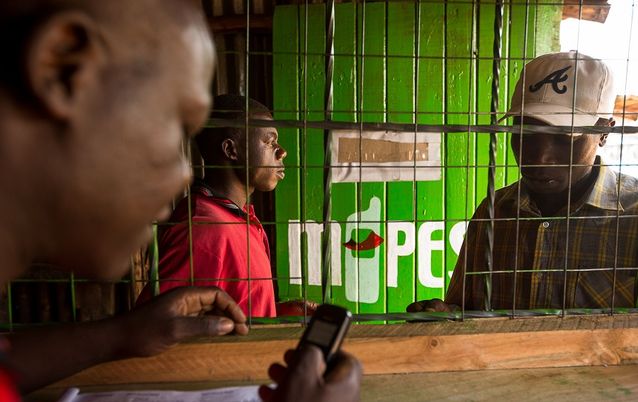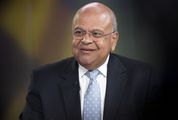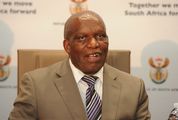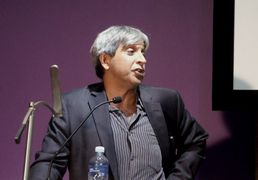The customer is really king in new economy
by Jacques Burger,
2015-12-08 06:16:55.0
CLEVER Buoy is a device that floats in the ocean and scans the water, detecting moving objects. When it detects an object similar in size and shape to a shark, it sends a signal via a mobile network operator called Optus to lifeguards, alerting them to the threat.
It’s brilliant, it’s useful and it picked up an innovation award at the South by South West innovation awards in the US.
It is not the brainchild of a software engineer, professor or IT company, but of an advertising agency in response to a brief to promote the extent to which the Optus network provides cover.
It is one of a number of initiatives spearheaded by M&C Saatchi Australia that has seen it voted the second most innovative company in Australia — company, not ad agency.
In a new economy in which the biggest hotel group (Airbnb) owns no property, and the world’s largest taxi service (Uber) owns no cars, what would the world’s biggest (or best) ad agency look like? The answer, perhaps, lies in a two-pronged approach: changing our remit on creativity and obsessing about a customer-first model.
Historically, agencies have limited their creative efforts to messaging — shaping the story to sell a product or service. The rest of the marketing was left to, well, the marketing departments.
Agencies hired copywriters and art directors to craft clever language and beautiful pictures. But in the experience economy of today, creativity is wired into the essence of the product or service. Smart businesses that are winning know they have to bring utility and tangible benefits to their audience to beat their competitors — so it’s become less about what you say, and more about what you do.
Consider Uber: clever idea, brilliant execution, creative thinking, but have you ever seen an ad for it? The focus and the budgets of the big global brands are shifting to product innovation, an improved customer experience and developing thinking that tackles category or consumer issues meaningfully — rather than just focusing on the well-crafted headline of a print advert.
The creativity and ideation services of traditional agencies might not be as relevant or valued as a decade ago. That does not mean creativity isn’t important — it’s arguably more important than ever. But the creativity is no longer coming from the copywriters — it is found at Tesla, Google and Apple.
The creativity is evidenced in product design (Tesla), digital platforms (Amazon) and fresh ways of transacting (Uber, M-Pesa). Every aspect of business is subjected to the challenge of innovation — pricing, service, channels and the offer. But few of those engineering this revolution are from the agency world.
The agencies making the transition to a broader understanding of what creative services to offer their clients are changing the way they work — who they hire, who they collaborate with and how they engage with clients. Collaborations have moved from working with illustrators or producers to working with engineers and college professors.
The processes are changing to take into account the complexities that come with driving true innovation — funding, patent laws, stakeholder management and return-on-investment models.
The M&C Saatchi offices in Sydney sport a laboratory in which people wear white coats amid electrical wires and gadgets. Not that one needs a lab to join the movement — M&C Saatchi Abel in SA launched a global pop-up store concept to clothe homeless people, starting with four posters.
What an agency moving into the world of innovation does need is a strong client relationship. It needs the freedom to dream up pricing strategies, amend the way a product is structured, develop a new one, change distribution networks and add new markets.
But why should clients give agencies the space, time and budgets that come with these big ambitions? The answer lies in the second focus area for a new-economy agency — the customer.
The client world lost sight of the customer for many years — there was little need to understand them or engage with them. For years, agencies were the only entities interested in understanding customers. Big data has changed this. But while clients now have the data, many agencies still lead the charge when it comes to insights, and to have a strong customer-centric partner is vital to any successful innovation journey.
Agencies that build their ideas from strong customer insights and develop their thinking starting with the customer (not the product or brand) will bring the most relevance to their clients’ innovation agenda.
• Burger is CEO, M&C Saatchi Abel Gauteng

Innovations such as M-Pesa, which makes it possible to transact from your cellphone, are making waves and getting noticed. Picture: BLOOMBERG/TREVOR SNAPP
CLEVER Buoy is a device that floats in the ocean and scans the water, detecting moving objects. When it detects an object similar in size and shape to a shark, it sends a signal via a mobile network operator called Optus to lifeguards, alerting them to the threat.
It’s brilliant, it’s useful and it picked up an innovation award at the South by South West innovation awards in the US.
It is not the brainchild of a software engineer, professor or IT company, but of an advertising agency in response to a brief to promote the extent to which the Optus network provides cover.
It is one of a number of initiatives spearheaded by M&C Saatchi Australia that has seen it voted the second most innovative company in Australia — company, not ad agency.
In a new economy in which the biggest hotel group (Airbnb) owns no property, and the world’s largest taxi service (Uber) owns no cars, what would the world’s biggest (or best) ad agency look like? The answer, perhaps, lies in a two-pronged approach: changing our remit on creativity and obsessing about a customer-first model.
Historically, agencies have limited their creative efforts to messaging — shaping the story to sell a product or service. The rest of the marketing was left to, well, the marketing departments.
Agencies hired copywriters and art directors to craft clever language and beautiful pictures. But in the experience economy of today, creativity is wired into the essence of the product or service. Smart businesses that are winning know they have to bring utility and tangible benefits to their audience to beat their competitors — so it’s become less about what you say, and more about what you do.
Consider Uber: clever idea, brilliant execution, creative thinking, but have you ever seen an ad for it? The focus and the budgets of the big global brands are shifting to product innovation, an improved customer experience and developing thinking that tackles category or consumer issues meaningfully — rather than just focusing on the well-crafted headline of a print advert.
The creativity and ideation services of traditional agencies might not be as relevant or valued as a decade ago. That does not mean creativity isn’t important — it’s arguably more important than ever. But the creativity is no longer coming from the copywriters — it is found at Tesla, Google and Apple.
The creativity is evidenced in product design (Tesla), digital platforms (Amazon) and fresh ways of transacting (Uber, M-Pesa). Every aspect of business is subjected to the challenge of innovation — pricing, service, channels and the offer. But few of those engineering this revolution are from the agency world.
The agencies making the transition to a broader understanding of what creative services to offer their clients are changing the way they work — who they hire, who they collaborate with and how they engage with clients. Collaborations have moved from working with illustrators or producers to working with engineers and college professors.
The processes are changing to take into account the complexities that come with driving true innovation — funding, patent laws, stakeholder management and return-on-investment models.
The M&C Saatchi offices in Sydney sport a laboratory in which people wear white coats amid electrical wires and gadgets. Not that one needs a lab to join the movement — M&C Saatchi Abel in SA launched a global pop-up store concept to clothe homeless people, starting with four posters.
What an agency moving into the world of innovation does need is a strong client relationship. It needs the freedom to dream up pricing strategies, amend the way a product is structured, develop a new one, change distribution networks and add new markets.
But why should clients give agencies the space, time and budgets that come with these big ambitions? The answer lies in the second focus area for a new-economy agency — the customer.
The client world lost sight of the customer for many years — there was little need to understand them or engage with them. For years, agencies were the only entities interested in understanding customers. Big data has changed this. But while clients now have the data, many agencies still lead the charge when it comes to insights, and to have a strong customer-centric partner is vital to any successful innovation journey.
Agencies that build their ideas from strong customer insights and develop their thinking starting with the customer (not the product or brand) will bring the most relevance to their clients’ innovation agenda.
• Burger is CEO, M&C Saatchi Abel Gauteng



























Change: -1.55%
Change: -1.49%
Change: -2.49%
Change: -1.19%
Change: -1.90%
Data supplied by Profile Data
Change: 0.00%
Change: 0.00%
Change: -1.55%
Change: 0.00%
Change: 0.00%
Data supplied by Profile Data
Change: 0.02%
Change: 0.03%
Change: 0.09%
Change: 3.17%
Change: 0.35%
Data supplied by Profile Data
Change: 0.00%
Change: 0.00%
Change: 0.00%
Change: 0.00%
Change: 0.00%
Data supplied by Profile Data